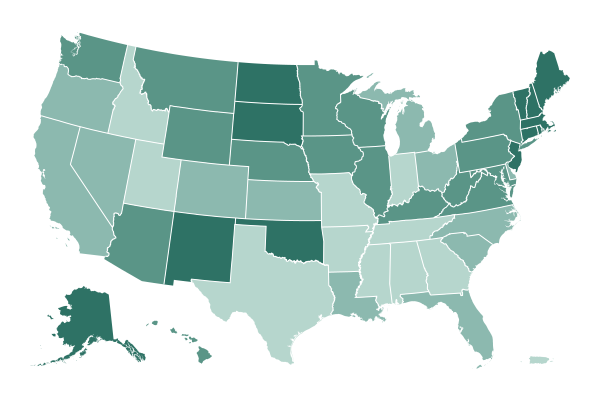Germany, France and Italy temporarily suspended the use of AstraZeneca’s Covid-19 vaccine on Monday, joining a growing list of nations that paused use of the vaccine in recent days over concerns that it might be tied to blood clots.
Leading public health agencies, including the World Health Organization, say that millions of people have received the vaccine without experiencing blood clotting issues, and they caution that experts have not found a causative link between the vaccine and the conditions. The company has also defended the vaccine as safe, amid the flurry of suspensions.
The safety scare is a setback for AstraZeneca’s vaccine, which has already struggled with a perception that it is a less desirable shot because it had a lower overall efficacy rate in clinical trials than some others. There is, however, extensive data showing that the vaccine is safe and effective, and especially good at preventing severe illness and death. In many places across the world, it is the only shot available.
Public health experts expect medical conditions to turn up by chance in some people after they get any vaccine. In the vast majority of cases such illnesses have nothing to do with the shots.
Scientists also worry that suspensions could feed vaccine hesitancy at a time when some European countries are entering a third wave of the virus, and the world is in a race to inoculate as many people as possible, as dangerous virus variants proliferate.
The European Medicines Agency, the W.H.O. and other regulators are investigating whether there is evidence of any link between the vaccine and blood clots.
On Monday, the E.M.A. reiterated its position that the benefit of the AstraZeneca vaccine outweighs the risk posed by possible side effects. And officials with the W.H.O. emphasized that the regulators’ investigations are precautionary and cover the batches of vaccines produced in Europe — not the ones made in South Korean and Indian facilities.
“While we need to continue to be very closely monitoring this, we do not want people to panic,” Dr. Soumya Swaminathan, chief scientist at the W.H.O., said on Monday. For the time being, she said, the W.H.O. advises countries to continue vaccinating citizens with the AstraZeneca vaccine.
Tedros Adhanom Ghebreyesus, the director general of the W.H.O., added that reviews of vaccine side effects are not unusual.
“It’s routine practice to investigate them, and it shows that the surveillance system works and that effective controls are in place,” he said on Monday.
AstraZeneca defended its product on Sunday, saying that the company is continually monitoring its safety.
“Around 17 million people in the E.U. and U.K. have now received our vaccine, and the number of cases of blood clots reported in this group is lower than the hundreds of cases that would be expected among the general population,” said Ann Taylor, the company’s chief medical officer.
In France, President Emmanuel Macron said on Monday that the country would stop using the vaccine pending an assessment by the European Medicines Agency on its use.
“The decision that was taken, in accordance with our European policy, is to suspend AstraZeneca vaccinations as a precaution, with the hope of quickly picking them up again if the European Medicines Agency permits it,” Mr. Macron said at a news conference in southwestern France. “We have a simple guide, to follow the science and the competent health authorities, and to do so in the framework of a European strategy,” he added.
In Italy, the decision was also “precautionary and temporary,” the Italian Medicines Agency said in a statement, adding that it, too, was waiting for more from the E.M.A.
In Germany, the health minister, Jens Spahn, said the country’s decision to temporarily suspend administration of the AstraZeneca vaccine was “purely precautionary.” The decision came after the national health regulator decided that further studies of AstraZeneca were needed after cases of a “rare cerebral vein thrombosis” had occurred in seven recipients, the minister said. More than 1.6 million doses of AstraZeneca have been administered in Germany, which has relied heavily on the BioNTech-Pfizer vaccine.
Indonesia and the Netherlands also suspended the use of AstraZeneca’s vaccine, citing reports of unusual blood clotting problems among a few people who recently received the shots in Norway. Blood clots, particularly if they are large, can damage tissue or organs like the lungs, heart or brain. Severe cases can be fatal, but people with small clots can often be treated outside of a hospital with prescription drugs.
Over the weekend, Norway said that four people who received a dose of the AstraZeneca vaccine had experienced blood clotting issues and all had low platelet counts. The country has reported two deaths in health care workers who each had an intracerebral hemorrhage. While Norway has paused the use of the vaccine, health officials have emphasized they were acting out of caution and that there was no evidence the problems had been caused by the vaccine.
By contrast, Thailand said that it would resume issuing the AstraZeneca vaccine on Tuesday, with Prime Minister Prayuth Chan-ocha among the first to receive it.
Denmark, Iceland and the Democratic Republic of Congo are among the countries that have suspended use of the AstraZeneca vaccine.
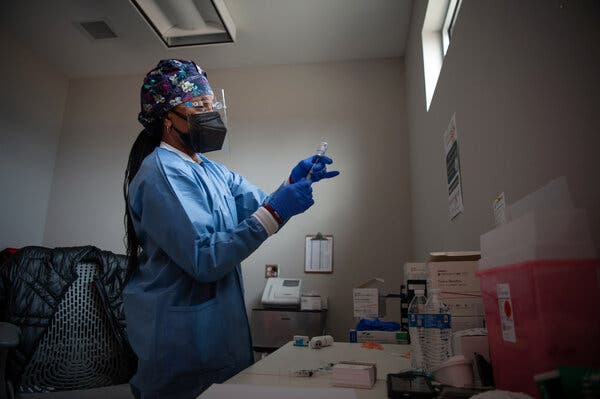
Everyone who lives in Mississippi will be eligible to receive a Covid vaccination starting Tuesday, Gov. Tate Reeves announced on Twitter.
“Get your shots, friends,” Mr. Reeves wrote. “And let’s get back to normal!”
Though the governor referred to “all Mississippians,” no vaccine has yet been authorized for use in children in the United States, so the change in eligibility presumably extends only to adults.
Last week, President Biden called on all states to open eligibility completely by May 1, and Mississippi is the second state to do so. Alaska opened its vaccination doors last week to anybody 16 or older who lives or works in the state.
Although Mississippi lags most other states in the share of its population that has been vaccinated so far, it is doing better than all of its neighbors except Louisiana, according to a New York Times tracker. As of Sunday, about 20 percent of Mississippians have received at least one shot, and 11 percent have been fully vaccinated.
The state had already opened eligibility further than most states, to cover everyone 50 or over. Governor Reeves urged older residents to book appointments as soon as possible.
Gov. Gretchen Whitmer of Michigan has said that her state will drop its restrictions on eligibility by April 5, about a month before Mr. Biden’s deadline. Gov. Ned Lamont of Connecticut said his state would follow suit, tentatively opening vaccine eligibility to all adults on April 5.
“It’s still going to take some time to get the vaccine to everyone who wants it and I urge patience to the greatest extent possible,” Mr. Lamont said in a news release.
Officials in Washington, D.C., said on Monday that they would do the same by May 1, allowing anyone 16 or older who lives in the city to be inoculated.
In New York, where the minimum eligible age was recently lowered to 60, the state will open three new mass vaccination sites on Long Island at the end of the week, Gov. Andrew M. Cuomo said Monday at a news conference. The sites will be on college campuses in Old Westbury, Brentwood and Southampton.
More categories of public-facing workers will become eligible in the state on Wednesday, including government employees, building services workers and employees of nonprofit groups. Mr. Cuomo has yet to announce how or when the state would open eligibility to all adults.
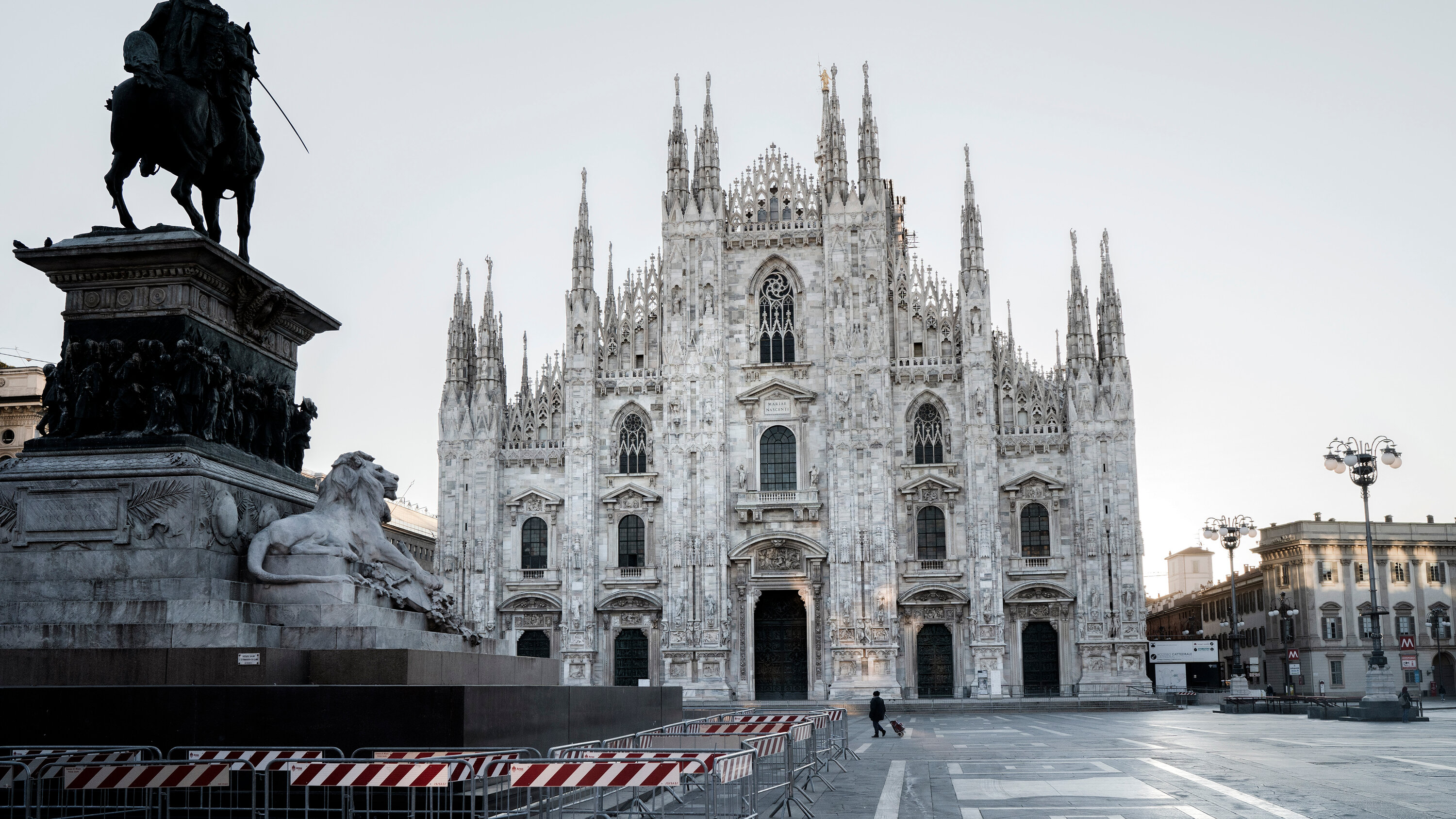
A year after Italy became the first European country to impose a national lockdown to contain the spread of the coronavirus, the nation has fallen eerily quiet once again, with new restrictions imposed on Monday in an effort to stop a third wave of infections that is threatening to wash over Europe and overwhelm its halting mass inoculation program.
As he explained the measures on Friday, Prime Minister Mario Draghi warned that Italy was facing a “new wave of contagion,” driven by more infectious variants of the coronavirus.
Just as before, Italy was not alone.
“We have clear signs: The third wave in Germany has already begun,” Lothar Wieler, head of the Robert Koch Institute for Infectious Diseases, said during a news conference on Friday. Prime Minister Viktor Orban of Hungary predicted that this week would be the most difficult since the start of the pandemic in terms of allocating hospital beds and breathing machines, as well as mobilizing nurses and doctors. Hospitalizations in France are at their highest levels since November, prompting the authorities to consider a third national lockdown.
Officials in the United States are watching those developments with wary eyes. At a White House news briefing on Monday, Dr. Rochelle Walensky, director of the Centers for Disease Control and Prevention, pleaded with Americans not to let their guard down as case numbers have dropped from their peak. She pointed to images of young people crowded onto Florida beaches, though generally people are safer outside than inside, and to European nations as a warning.
“Each of these countries has had nadirs like we are having now, and each took an upward trend after they disregarded no mitigation strategies,” she said. “They simply took their eye off the ball. I’m pleading with you for the sake of our nation’s health. These should be warning signs for all of us.”
The U.S. death rate remains at nearly 1,400 people every day. That number still exceeds the summer peak, when patients filled Sun Belt hospitals and outbreaks in states that reopened early drove record numbers of cases, though daily deaths nationwide remained lower than the first surge last spring. The average number of new reported cases per day remains comparable to the figures reported in mid-October.
Across Europe, cases are spiking. Supply shortages and vaccine skepticism, as well as bureaucracy and logistical obstacles, have slowed the pace of inoculations. Governments are putting exhausted populations under lockdown. Street protests are turning violent. A year after the virus began spreading in Europe, things feel unnervingly the same.
In Rome, the empty streets, closed schools, shuttered restaurants and canceled Easter holidays came as a relief to some residents after months of climbing infections, choked hospitals and deaths.
“It’s a liberation to return to lockdown, because for months, after everything that happened, people of every age were going out acting like there was no problem,” said Annarita Santini, 57, as she rode her bike in front of the Trevi Fountain, a popular site that had no visitors except for three police officers. “At least like this,” she added, “the air can be cleared and people will be scared again.”
For months, Italy had relied on a color-coded system of restrictions that, unlike the blanket lockdown of last year, sought to surgically smother emerging outbreaks in order to keep much of the country open and running. It does not seem to have worked.
“History repeats itself,” Massimo Galli, one of Italy’s top virologists, told the daily Corriere della Sera on Monday. “The third wave started, and the variants are running.”
“Unfortunately we all got the illusion that the arrival of the vaccines would reduce the necessity of more drastic closures,” he said. “But the vaccines did not arrive in sufficient quantities.”
Sheryl Gay Stolberg Lauren Leatherby and Mitch Smith contributed reporting.
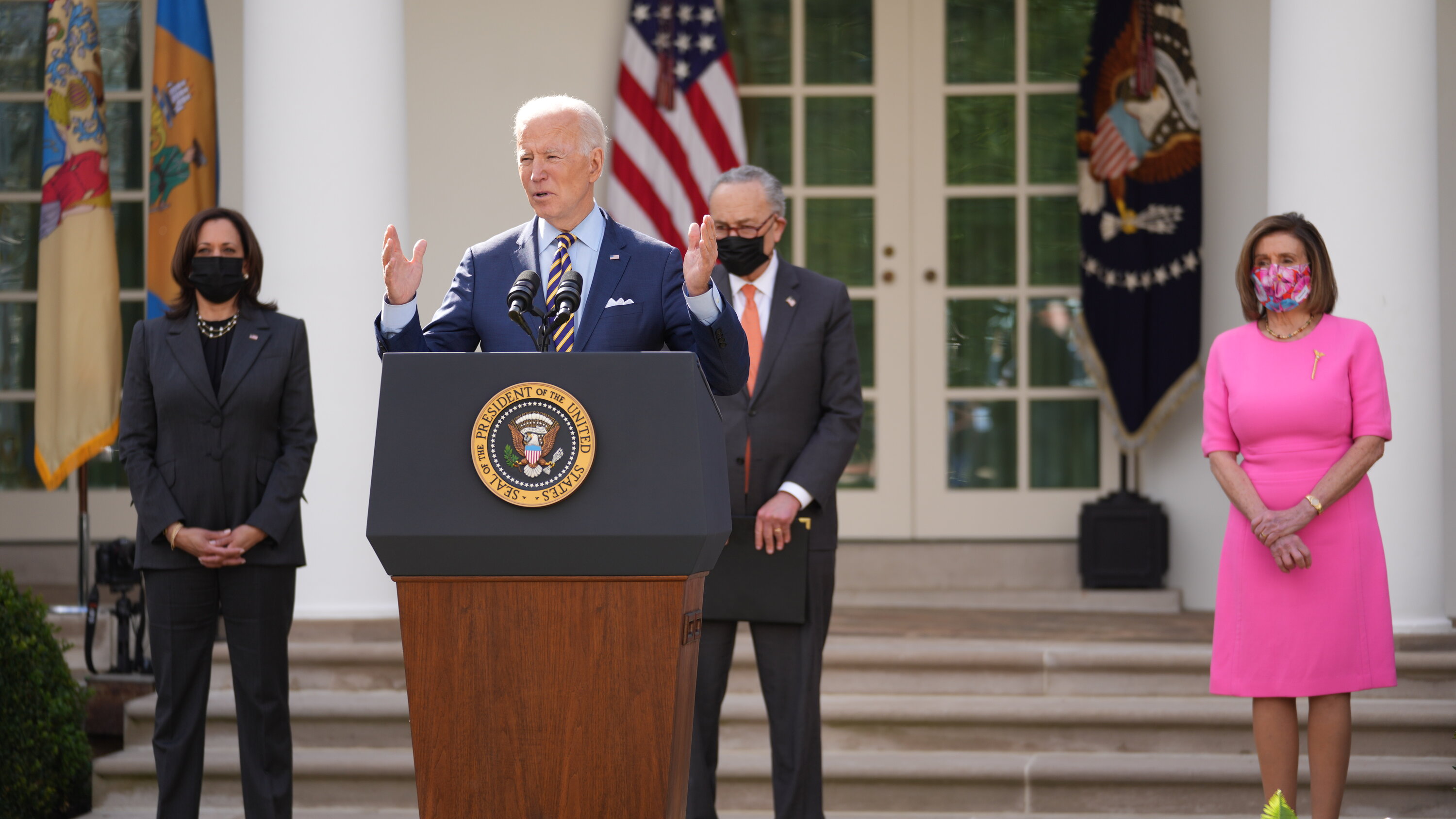
President Biden said Monday that his administration was on pace to achieve two key goals by March 25: the distribution of 100 million shots of Covid-19 vaccines since his inauguration and 100 million stimulus payments under his economic relief bill.
“Shots in arms and money in pockets. That’s important,” Mr. Biden said in a brief address from the White House.
He also introduced Gene Sperling, a longtime Democratic policy aide, as his pick to oversee implementation of the $1.9 trillion economic relief package that he signed into law late last week.
“The American Rescue Plan is already doing what it was designed to do,” he said. “Make a difference in people’s everyday lives.”
The United States has administered 92.6 million vaccine doses since Jan. 20, when Mr. Biden took office, according to data released on Monday by the Centers for Disease Control and Prevention. At the current pace of vaccinations, the country will pass 100 million doses under Mr. Biden before the end of the week.
Answering a question from a reporter after the speech, Mr. Biden brushed aside calls for his administration to enlist former President Donald J. Trump’s help in appealing to Republicans who have resisted getting vaccinated.
“I discussed it with my team,” Mr. Biden said, “And they say the thing that has more impact than anything Trump would say to the MAGA folks is what the local doctor, what the local preachers, the local people in the community would say. So I urge, I urge all local docs, and ministers, and priests, to talk about why — why it’s important to get that vaccine.”
Mr. Biden’s remarks came as his team launched a week of sales pitches for the relief bill. The president and several members of his administration will travel the country to promote a plan that contains direct $1,400-per-person payments to low- and middle-income Americans, new monthly checks for parents and additional relief for the unemployed, among other particulars.
Mr. Biden will visit Delaware County, Pa., on Tuesday and will appear with Vice President Kamala Harris on Friday in Atlanta, which helped deliver Democrats the Senate majority that made the rescue law possible.
A group of other administration officials, including the first lady, Jill Biden, and Ms. Harris’s husband, Doug Emhoff, will make their own trips. Ms. Harris and her husband landed in Las Vegas for an event on Monday afternoon, while Dr. Biden finished an event in New Jersey.
The road show is an effort to avoid the messaging mistakes of President Barack Obama’s administration, which Democrats now believe failed to continue vocally building support for his $780 billion stimulus act after it passed in 2009. The challenge will be to highlight less obvious provisions, including the largest federal infusion of aid to the poor in generations, a substantial expansion of the child tax credit and increased subsidies for health insurance.
Mr. Biden vowed on Monday to bring “fastidious oversight” to the spending in the relief bill, in order to ensure it is distributed quickly and equitably. He praised Mr. Sperling, a former National Economic Council director under Presidents Bill Clinton and Barack Obama, and said Mr. Sperling would be “a source of constant communication, a source of guidance and support, and above all, a source of accountability for all of us to get the job done.”
“We have to prove to the American people that their government can deliver for them, and that they can do it without waste or fraud,” Mr. Biden said.
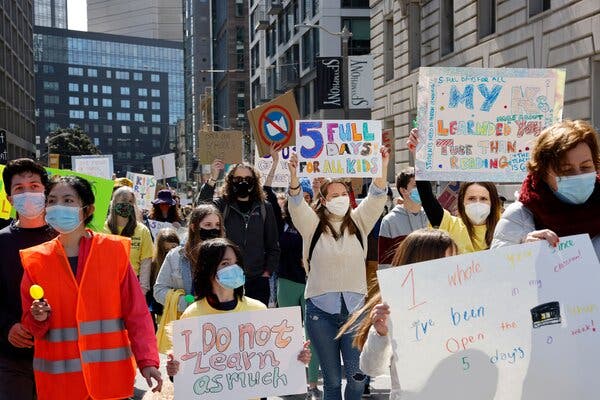
Parents of schoolchildren protested in several cities around the United States over the weekend, frustrated by the off-again-on-again reopening policies in some school districts and blanket closures in others a full year after the pandemic began, despite growing scientific evidence that schools can reopen safely if they follow basic procedures.
Several hundred people rallied in downtown Naperville, Ill., on Sunday to urge officials to give students the option of returning to the classroom five days a week. Wielding signs with messages like “Get our kids back in school” and “Flip the school board,” demonstrators chanted, “Five days a week,” The Naperville Sun reported.
In San Francisco, hundreds of parents and children marched on Saturday in support of a five-day in-person learning schedule, arguing that a partial reopening falls short, The San Francisco Chronicle reported. Similarly, parents demonstrated at Pan Pacific Park in Los Angeles on Saturday, according to a local news station, saying a tentative agreement with teachers for a partial reopening in April was not enough.
Parents pressing for in-person classes say that remote learning leaves students feeling emotionally and socially drained at home.
They have the Biden administration on their side. Jill Biden and members of her husband’s administration have been traveling the country in a campaign aimed at reopening schools. And the Centers for Disease Control and Prevention released guidelines last month saying it was safe for schools to reopen if they could ensure measures like proper masking, physical distancing and hygiene were taken. The recommendations called for every elementary school to open in some fashion.
In early February, The New York Times surveyed 175 experts — mostly pediatricians focused on public health — who largely agreed that it was safe enough for schools to be open to elementary students for full-time, in-person instruction. Some said that was true even in communities where coronavirus cases were widespread, with proper safety precautions, including adequate ventilation and avoidance of large group activities.
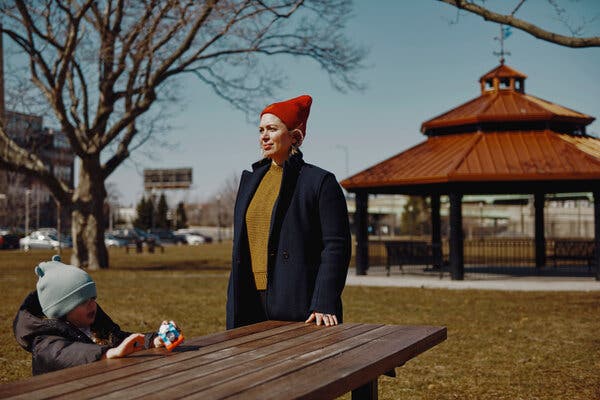
In the year since the pandemic upended the U.S. economy, more than four million people have quit the labor force, leaving a gaping hole in the job market that cuts across age and circumstances.
An exceptionally high number have been sidelined because of child care and other family responsibilities or health concerns. Others gave up looking because they were discouraged by the lack of opportunities. And some older workers have called it quits earlier than they had planned.
These labor-force dropouts are not counted in the most commonly cited unemployment rate, which was 6.2 percent in February, making the group something of a hidden casualty of the pandemic.
Now, as the labor market begins to emerge from the pandemic’s vise, whether those who have left the labor force return to work — and if so, how quickly — is one of the big questions about the shape of the recovery.
There is some reason for optimism. Economists expect that many who have left the labor force in the past year will return to work once health concerns and child care issues are alleviated. And they are optimistic that as the labor market heats up, it will draw in workers who grew disenchanted with the job search.
Moreover, after the last recession, many economists said those who left the labor force were unlikely to come back, whether because of disabilities, the opioid crisis, a loss of skills or other reasons. Yet labor force participation, adjusted for demographic shifts, eventually returned to its previous level.
But the speed with which the pandemic has driven workers from the labor force could leave lasting damage.
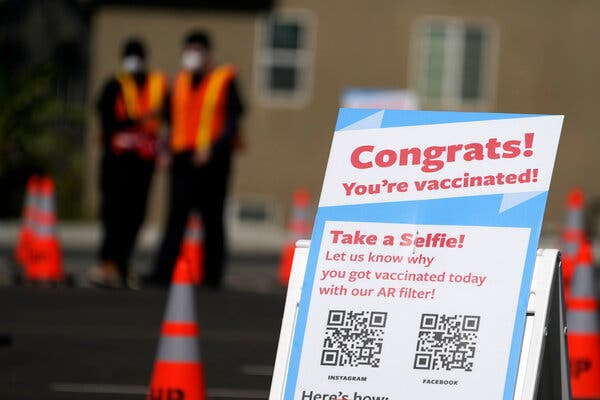
Facebook said on Monday that it planned to expand its efforts to help get people vaccinated against the coronavirus.
The social network said it would roll out a new location-based tool to direct people to the clinics nearest to them that offer vaccinations, which users can find inside Facebook’s main app.
The company will also have an information center for Covid-19-related questions and data inside its Instagram photo-sharing app, building on a similar effort that Facebook introduced last year. And it will keep adding automated chat bots to WhatsApp, which can text users information on where to get vaccinated.
“By working closely with national and global health authorities and using our scale to reach people quickly, we’re doing our part to help people get credible information, get vaccinated and come back together safely,” Mark Zuckerberg, the chief executive of Facebook, said in a company blog post.
While Facebook previously allowed anti-vaccination groups on its platform to flourish, last year it pledged to remove Covid-related misinformation from its site. It also labeled posts related to the coronavirus with links to its official information center so it could direct people to sources like the World Health Organization.
But critics have said that false or misleading data about vaccines and the virus continues to be visible in private groups and pages on Facebook.
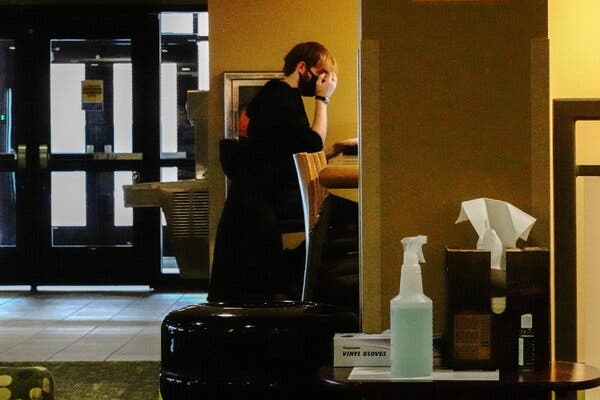
Young people’s reports of poor well-being during the pandemic have fueled a global crisis that needs immediate attention, according to a nonprofit organization that surveyed nearly 50,000 people in eight countries, providing a comprehensive overview of the pandemic’s impact on mental health.
More than one in four respondents reported facing or being at risk of clinical disorders, a number that rose to nearly one in two for those ages 18 to 24, according to the report, which was released by group, Sapien Labs, a U.S. nonprofit group dedicated to understanding the human mind.
The report, based on data collected from an online, anonymous survey whose findings were published on Monday, focused on Australia, Britain, Canada, India, New Zealand, Singapore, South Africa and the United States. It found that 40 percent of respondents ages 18 to 24 reported feeling sadness, distress or hopelessness, as well as unwanted, strange and obsessive thoughts.
“The coronavirus pandemic has exacerbated trends that were already there, and made them worse,” said Dr. Tara Thiagarajan, the founder and chief scientist of Sapien Labs. “Particularly, social isolation has had a larger impact on young people, and it’s pushed many of them over the edge.”
Other studies have shown that the pandemic has disproportionately affected the mental health of young people, women and people of color.
Mental health experts have also warned against the long-term effects of the pandemic, which are likely to include an economic recession and the psychological fallout of long-term social isolation.
The report’s authors, Dr. Thiagarajan and Jennifer Newson, urged governments to focus on population-wide policies targeting mental health, instead of individual approaches that are often favored.
“While much of the focus in the mental health arena has been on self-care through apps, therapy and other programs, social and economic policy and institutional culture may have a large role to play in the mitigation of our present mental health crisis and prevention of future crises,” they wrote.
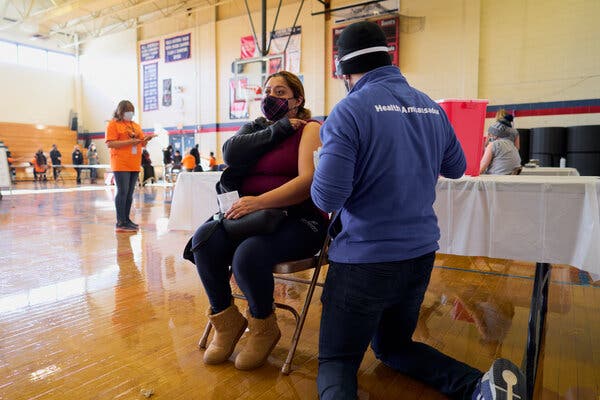
Nearly nine in 10 Americans who received the first dose of a two-dose Covid-19 vaccine went on to complete the regimen, and most people who received two doses got them within the recommended time frames, federal health officials reported on Monday.
The analyses, by investigators with the Centers for Disease Control and Prevention, included data on tens of millions of Americans who received the Moderna or Pfizer-BioNTech vaccines between mid-December and mid-February.
The percentage of people completing the regimens varied markedly by jurisdiction and between demographic groups, however. Federal health officials urged local vaccinators to take steps to ensure that everyone comes back, including scheduling a return appointment when giving the first shot, sending reminders, and rescheduling missed or canceled appointments.
While the data were “reassuring” over all, C.D.C. researchers said, the first groups receiving the vaccine in the United States — health care workers and long-term care facility residents — had easy access to the second dose, since they were likely to have been vaccinated at their workplace or place of residence.
As vaccines are offered to broader groups of people, the scientists warned, the percentage getting fully vaccinated may drop.
People are not considered fully vaccinated against the coronavirus until two weeks after they receive the second shot of the two-dose regimen (or two weeks after receiving the single-dose vaccine made by Johnson & Johnson).
C.D.C. researchers looked at some 40.5 million Americans who were vaccinated between Dec. 14, 2020 and Feb. 14, 2021.
In one analysis, they reviewed the records of 12.4 million people who had received the first dose of a two-dose vaccine regimen and had enough time to get the second dose. Some 88 percent had completed the series, while 8.6 percent were still within the allowable interval — 42 days — to receive the second dose. But 3.4 percent had missed that window. (The recommended interval between doses is 21 days for the Pfizer-BioNTech vaccine and 28 days for Moderna).
Americans most likely to have missed the second dose varied by locality. Among vaccine recipients for whom information on race and ethnicity were known, the lowest completion rates were among Native American or Alaska Native individuals.
A second analysis of 14.2 million people who completed the full regimen found that 95.6 percent received the second dose within the recommended period, though again the figures varied by community.
The authors of the study urged providers and public health workers to encourage Americans to come back for second doses and to emphasize the importance of full vaccination. C.D.C. officials also asked that vaccinators work to understand what keeps people from completing the series, and whether access or lack of confidence in the vaccines are playing a role.
GLOBAL ROUNDUP

Usually, it is foreigners who flock to Lake Baikal in Siberia this time of year to skate, bike, hike, run, drive, hover and ski over a stark expanse of ice and snow, while Russians escape the cold to Turkey or Thailand.
But Russia’s borders are still closed because of the pandemic, and to the surprise of locals, crowds of Russian tourists have traded tropical beaches for the icicle-draped shores of Baikal, the world’s deepest lake. The tour guides are calling it Russian Season.
If you catch a moment of stillness on the crescent-shaped, 400-mile-long, mile-deep lake, the assault on the senses is otherworldly. You stand on three feet of ice so solid it is crossed safely by heavy trucks, but you feel fragile, fleeting and small.
Yet stillness is hard to come by.
Western governments have been discouraging travel during the pandemic, but in Russia, as is so often the case, things are different. The Kremlin has turned coronavirus-related border closures into an opportunity to get Russians — who have spent the last 30 years exploring the world beyond the former Iron Curtain — hooked on vacationing at home.
A state-funded program that began last August offers $270 refunds on domestic leisure trips, including flights and hotel stays. It is one example of how Russia, which had one of the world’s highest coronavirus death tolls last year, has often prioritized the economy over public health during the pandemic.
“Our people are used to traveling abroad to a significant degree,” President Vladimir V. Putin said in December. “Developing domestic tourism is no less important.”
In other news from around the world:
-
The government of Hong Kong said on Monday that vaccine eligibility would be expanded to include everyone age 30 and older regardless of occupation, as the Chinese territory tries to increase vaccine uptake. About 200,000 of Hong Kong’s 7.5 million residents have received a first dose of either the BioNTech or Sinovac vaccines since the inoculation drive began late last month. But the proportion of people who show up for their appointments has fallen amid reports that six people have died after receiving the vaccine developed by Sinovac, a private Chinese company. Officials say that two of the deaths are not directly related to the vaccine and that the others are under investigation. The vaccine announcement came as Hong Kong is trying to contain a cluster of cases that began at a gym and has grown to 122 people, with more than 850 close contacts sent to government quarantine facilities and multiple residential buildings locked down overnight for mandatory testing. Also on Monday, the U.S. Consulate in Hong Kong said it was closing for deep cleaning after two employees tested positive for the virus.
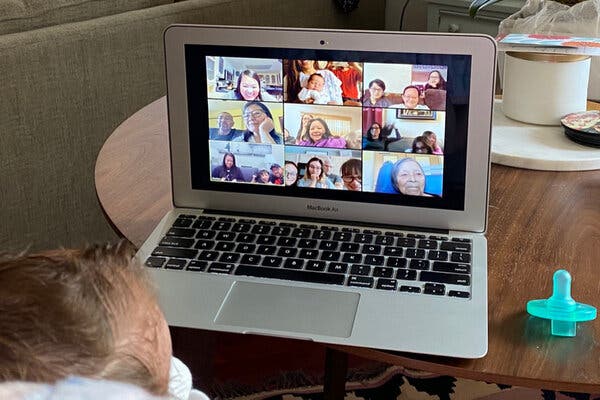
“When my toddler grandson tried to feed me a blueberry through the cellphone screen.”
That was the answer from Alice Gilgoff, 74, of Rosendale, N.Y., when The New York Times asked readers: When did the coronavirus pandemic become real for you? Nearly 2,000 people responded, and we have compiled many of their thoughts.
Across the United States and around the globe, nearly everyone experienced a moment when the pandemic truly hit home. And one year later, as the pandemic carries on, having claimed more than 2.6 million lives worldwide, it has been with us long enough to have its own history.
The answers from readers to that question are a journey through time. It has been a year of trauma and resilience. No one has been spared, yet some have borne burdens far more profound than others.
Still, our stories connect us: each of us human, each of us just trying to survive a pandemic that changed us and the world.
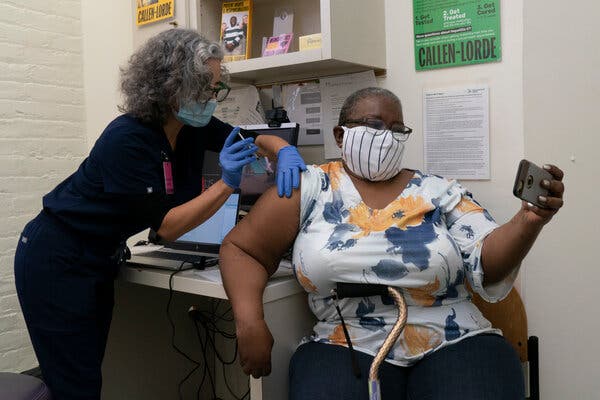
Most people aren’t particularly fond of needles.
For a significant number of people, though, fear of needles goes beyond anxiety into a more dangerous area, and prevents them from seeking out needed medical care.
As the world’s hopes of returning to a post-pandemic normal rest largely on people’s willingness to take a Covid-19 vaccine, experts and health care professionals are assuring those people that there are ways to overcome this problem.
“It would be heartbreaking to me if a fear of needles held someone back from getting this vaccine, because there are things we can do to alleviate that,” said Dr. Nipunie S. Rajapakse, an infectious diseases expert at the Mayo Clinic in Minnesota.
A study from the University of Michigan found that 16 percent of adults in several countries avoided annual flu vaccinations because of a fear of needles, and 20 percent avoided tetanus shots.
Whether fear is keeping you from being vaccinated at all or is causing you distress about doing so, there are some steps that the experts suggest:
-
Seek professional help. A therapist can help people with the most severe fear, especially if the fear is interfering with getting appropriate medical care.
-
Tell the nurse about your fear before getting the shot. There may be techniques the nurse can use, or products may be available, to reduce the pain of the injection or to put you at ease.
-
Distract yourself. It could be a YouTube video or your favorite song playing on your phone. You could practice deep-breathing or meditation techniques, or wiggle your toes, or look around and count all of the blue items you can see in the room.
-
Focus on the benefits. Think about the summer barbecues, family gatherings and economic recovery the vaccines will help usher in, and you might be feeling more optimistic and excited than nervous.
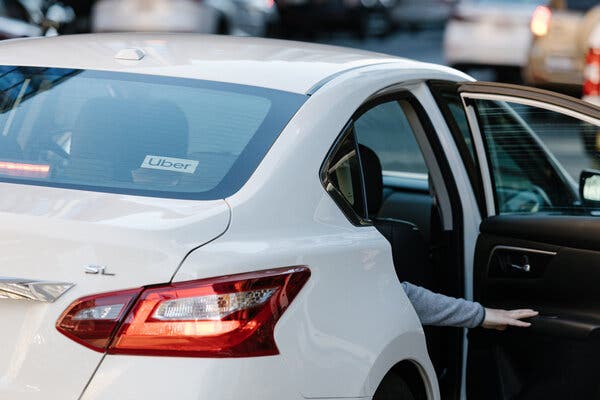
Two arrests have been made after scenes from a viral video that circulated showed passengers taunting and deliberately coughing on an Uber driver.
In the dashcam video, the driver, who had a hand on his head, looked exasperated. A woman in the passenger’s seat uttered an expletive about a mask and then coughed on the driver, while using racial slurs. Another passenger joined in, pulling down her mask and laughing. “And I got corona,” she said.
The driver refused to continue the ride, and the situation escalated. The passenger who had initially coughed on the driver grabbed his phone and tore off his mask, breaking the strap. The women continued screaming profanities.
The San Francisco Police Department said in a statement last Thursday that the driver, identified by KGO-TV as Subhakar Khadka, had picked up three passengers in the early afternoon on March 7, but when he saw that one of the women was not wearing a mask, he told them he would not continue unless they all wore masks.
In a video that was posted on Instagram and has since been removed, one passenger said that the driver was trying to make them exit the car in the middle of the freeway.
Soon, “an altercation ensued,” the police said.
One woman grabbed the driver’s cellphone, which Mr. Khadka eventually retrieved, and another passenger sprayed “what is believed to be pepper spray” into the car through an open window after they exited the vehicle, according to the police.
The flare-up is the latest high-profile example of mask conflicts, which have sometimes taken violent turns. Last year, prosecutors in Chicago said two sisters attacked a store security guard with a garbage can. One of the women stabbed the guard repeatedly with a small knife after he tried to insist that they wear masks and use the store’s hand sanitizer on entry.
In another case last year, an 80-year-old man in upstate New York was killed after he asked a bar patron to wear a mask; the patron shoved the man to the ground, causing him to hit his head.
Mr. Khadka, an Uber driver from Nepal who came to the United States eight years ago, said in an interview with KPIX that he never said anything “bad” to the women, and that they had refused to leave his car. Mr. Khadka said he believed he was singled out for their ire because he is South Asian. “If I was of another complexion, I would have not gotten that treatment from them,” he said. “The moment I opened my mouth to speak, they realized I’m not among one of them. It’s easy for them to intimidate me.”
One of the passengers was arrested in Las Vegas on Thursday, the Las Vegas Police Department said. The passenger, Malaysia King, 24, was taken into custody on a warrant for assault with a caustic chemical, assault and battery, conspiracy and violation of a health and safety code, the police said.
A second passenger — Arna Kimiai, 24, turned herself in on Sunday, the San Francisco Police Department announced. Ms. Kimiai was booked on charges of robbery, assault and battery, conspiracy, and violation of a health and safety code.
“The behavior captured on video in this incident showed a callous disregard for the safety and well-being of an essential service worker in the midst of a deadly pandemic,” said Lt. Tracy McCray, who heads the San Francisco Police Department’s robbery detail.
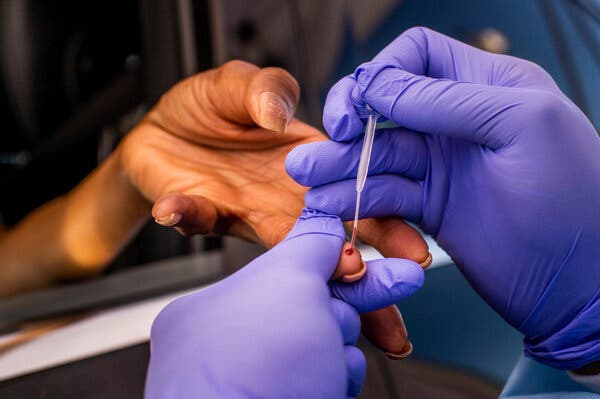
The version of the coronavirus that surfaced in Britain late last year was shocking for many reasons. It came just as vaccines had offered a glimpse of the end of the pandemic, threatening to dash those hopes. It was far more contagious than earlier variants, leading to a swift increase in hospitalizations. And perhaps most surprising to scientists: It had amassed a large constellation of mutations seemingly overnight.
A coronavirus typically gains mutations on a slow-but-steady pace of about two per month. But this variant, called B.1.1.7, had acquired 23 mutations that were not on the virus first identified in China. And 17 of those had developed all at once, sometime after it diverged from its most recent ancestor.
Experts said there’s only one good hypothesis for how this happened: At some point the virus must have infected someone with a weak immune system, allowing it to adapt and evolve for months inside the person’s body before being transmitted to others. “It appears to be the most likely explanation,” said Dr. Ravindra Gupta, a virologist at the University of Cambridge.
If true, the idea has implications for vaccination programs, particularly in countries that have not yet begun to immunize their populations. People with compromised immune systems — such as cancer patients — should be among the first to be vaccinated, said Dr. Adam Lauring, a virologist and infectious disease physician at the University of Michigan. The faster that group is protected, the lower the risk that their bodies turn into incubators for the world’s next supercharged mutant.



